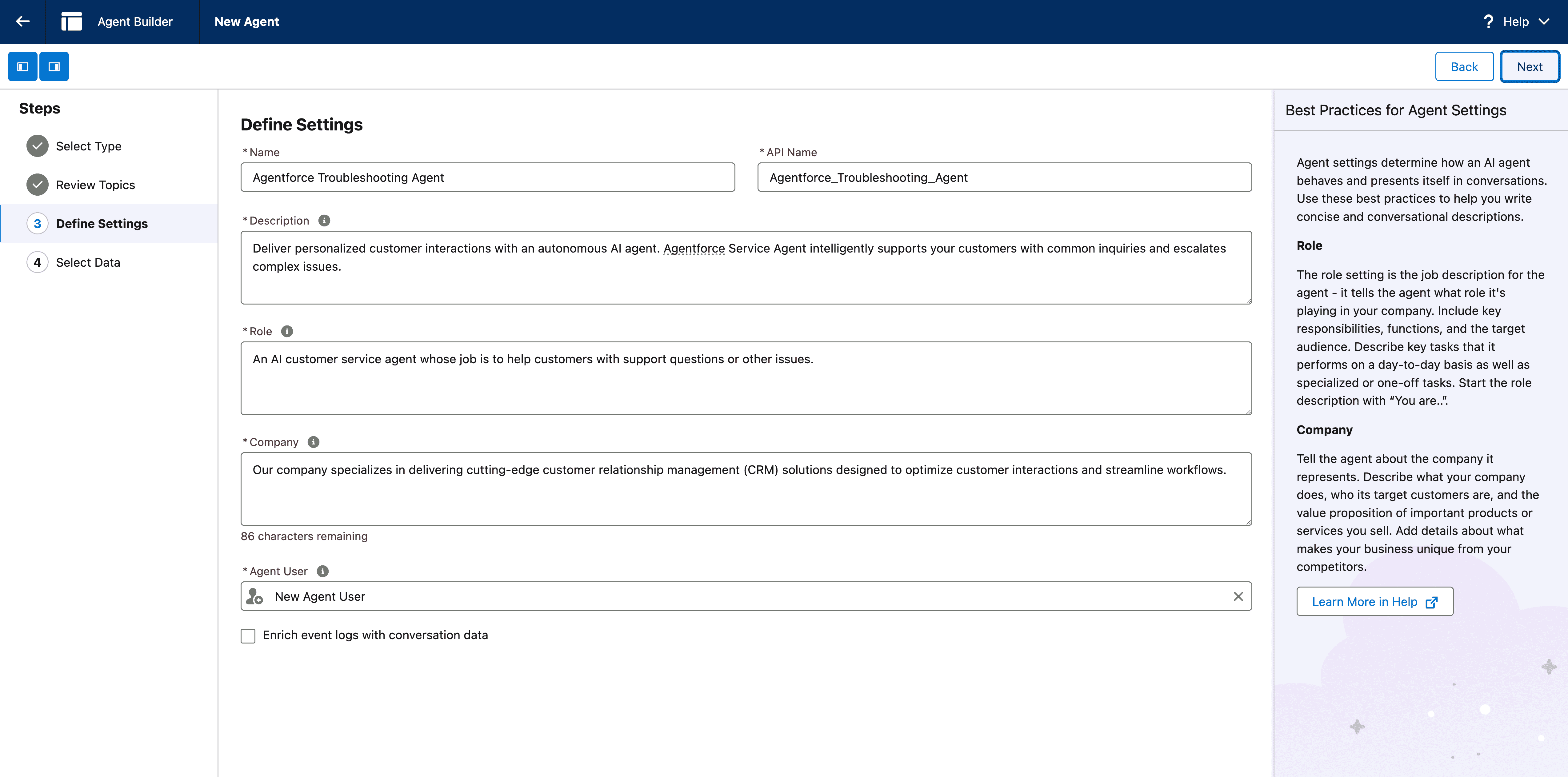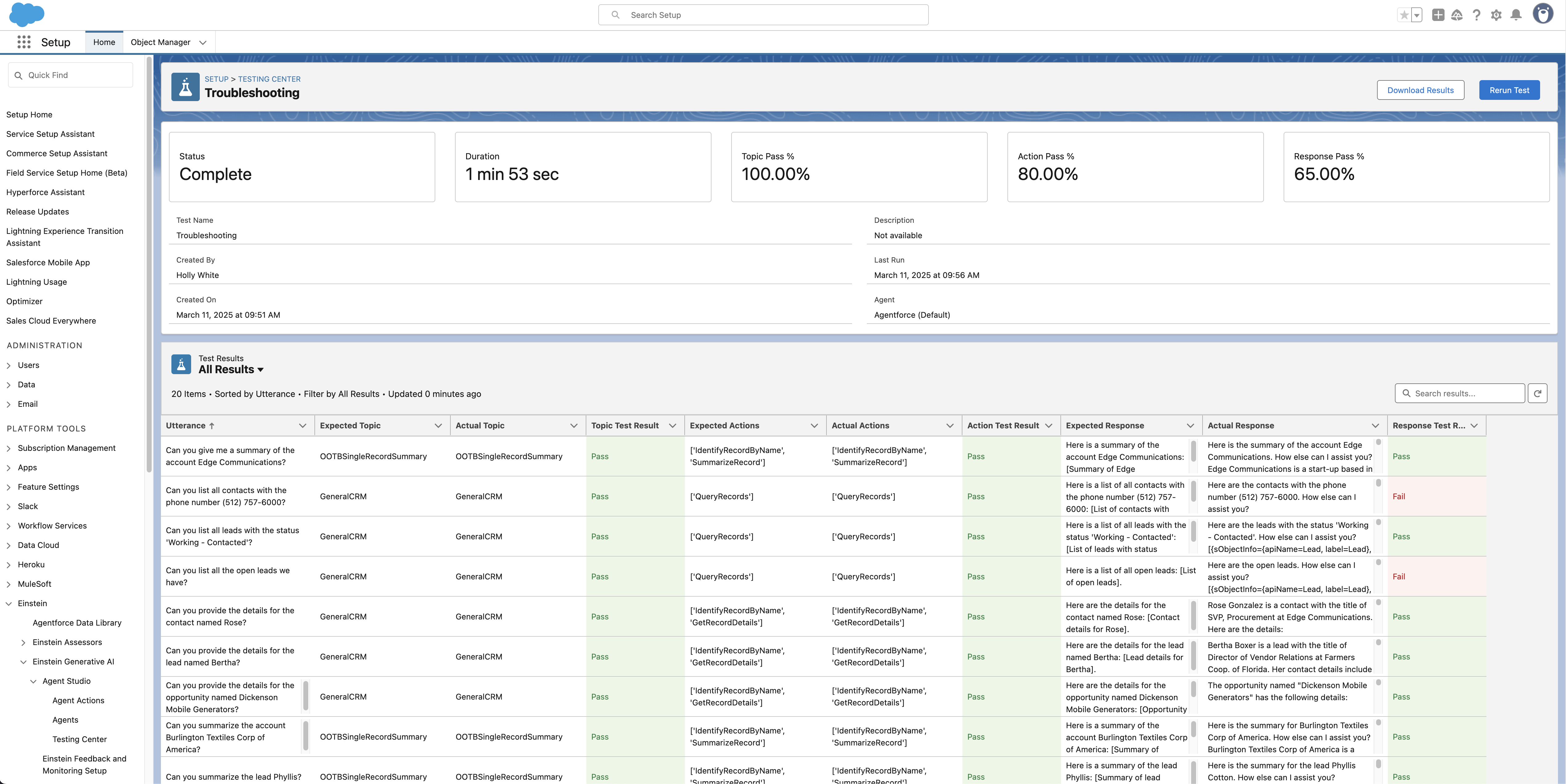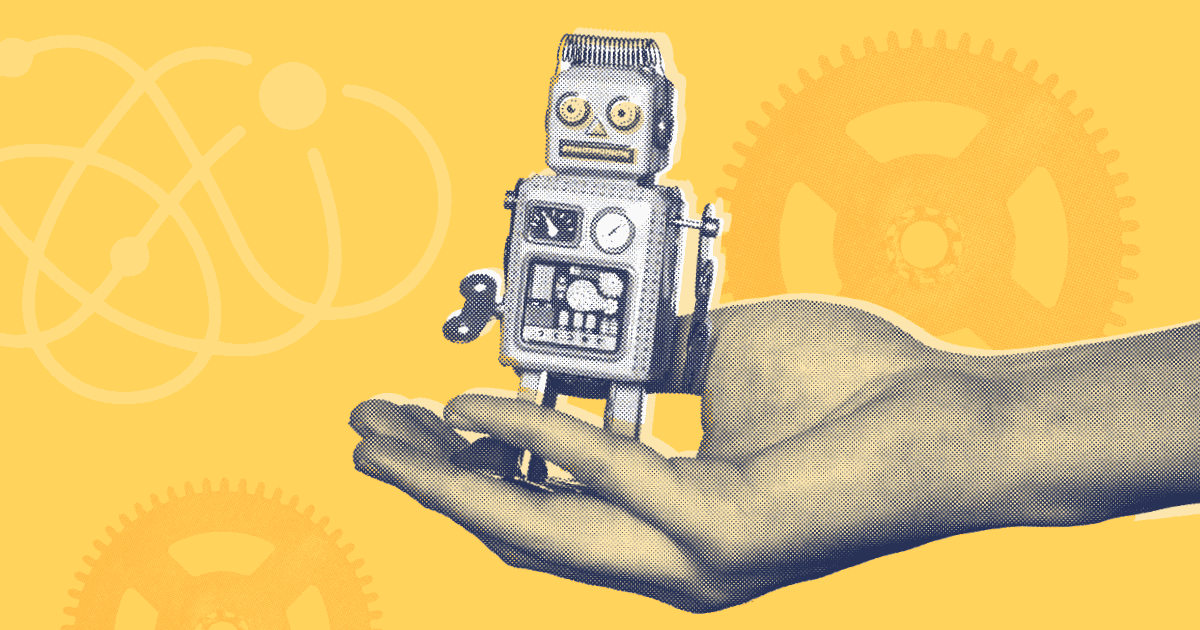There’s no escaping the new age of AI. With the huge shift towards the use of GPT models and LLMs, we’re used to having the answers to our questions instantly, so it’s only natural that we expect the same from businesses and their customer support. Customers’ expectations are growing, and businesses must keep up.
With Agentforce, Salesforce teams can help their users keep up with growing demand. The groundbreaking new platform helps teams build and maintain a whole suite of out-of-the-box sales agents, service agents, commerce agents, and many more. These agents can preempt and assess a situation, use reasoning and multiple data sources to carry out tasks to keep the customer satisfied and learn from past interactions to keep the business operations running smoothly.
In this post, we’ll take an in-depth look into Agentforce, the technology behind it and best practices to make sure you’re leveraging Agentforce securely and effectively.
What is Agentforce?
Agentforce is Salesforce’s advanced AI solution that enables autonomous, proactive agents across the whole platform, including customer service, sales, and marketing. It’s powered by the Atlas Reasoning Engine, as well as Einstein Generative AI, and represents a significant leap in conversational AI.
What’s the difference between an agent and a chatbot?
Chatbots are only as good as the information that you give it. They operate on fixed rules, following a predefined workflow that’s been built behind the scenes. For example, if a customer wants to know if a company offers free shipping, the chatbot will consult its bank of predefined knowledge and answer based on those keywords. Chatbots can become more advanced by integrating with an order database, enabling them to retrieve the static status of an order when the customer inputs their order number.
Chatbots are definitely useful and are great for carrying out repetitive tasks or answering frequently asked questions — but they aren’t able to take action.
An Agentforce agent is far more sophisticated than a chatbot. Agents understand human intent and can take action, pivoting when the conversation changes direction, and tailoring recommendations based on real-time data. By being able to handle multiple queries in one customer request, the agents are able to save a lot of time helping your business move faster.
The evolution of Agentforce
While Agentforce is built on Einstein AI’s foundation, it’s a huge directional shift in Salesforce’s AI capabilities, moving from predictive and generative AI to proactive, agentic AI.
Laying the foundations with Einstein GPT
Einstein GPT was launched at TrailblazerDX 2023 and laid the foundation for Salesforce’s brand new AI capabilities. By leveraging LLMs (large language models) Einstein GPT allowed Salesforce users to carry out automated tasks like writing personalised emails, tailoring marketing copy to a specific audience and providing meeting transcripts. The focus was on streamlining repetitive tasks and saving time through automation — but, like chatbots, Einstein GPT lacked the ability to be proactive and relied heavily on a user reacting to its suggestions.
Making the move to virtual assistants with Einstein Copilot
Less than a year later in 2024, Salesforce announced Einstein Copilot. This new AI offering was a step up from Einstein GPT, as it introduced real-time assistance that guides users with out-of-the-box actions and automated responses like “What would you like to do next?”. By pulling the real-time data from Salesforce’s Data Cloud, responses could be tailored and users could carry out tasks directly from the assistant. Copilot also includes Prompt Builder which can be used to create generative AI outputs in your org — although this functionality is separate from Agent Builder, prompts written in Prompt Builder can be invoked by agents to give them generative AI capabilities. With Einstein Copilot also came the Einstein Trust Layer — the Salesforce platform’s AI security framework. The Trust Layer’s there to ensure complete data privacy and compliance while using the AI tools. Most importantly, the layer is there to ensure the LLM doesn’t store data (Zero Copy) or learn from the requests. Although a step up from previous tools, Einstein Copilot still required users to interact and initiate actions — serving as a smart assistant rather than an agent.
Pioneering autonomous agents with Agentforce
Agentforce was announced at Dreamforce 2024 and brought with it the new age of Salesforce’s agentic AI. This marked a significant leap beyond the realm of smart assistants into fully functioning agents that can analyze data and make decisions without human intervention. And that shift aligns with our findings — AI adoption is now grassroots, with 86% of respondents exploring new use cases for AI in 2025.
Agentforce 360
At Dreamforce 2025, Salesforce introduced Agentforce 360, expanding on last year’s launch with new tools that give developers more control, transparency, and flexibility when building and managing agents. The update introduces Agent Script, a declarative scripting language that lets you define agent logic and reasoning in a human-readable format; Agentforce Vibes, which brings “vibe coding” — a more transparent, collaborative way to build — into popular IDEs; and Agentforce Voice, which bridges traditional Interactive Voice Response (IVR) systems directly into Salesforce workflows. Together, these updates make Agentforce 360 less about AI replacing developers and more about giving teams smarter tools to build, test, and manage agents responsibly.
The technology behind Agentforce
Powerful agents rely on powerful technology. These systems work together to deliver fast and intelligent answers to user’s and customer’s queries.
The Atlas Reasoning Engine is the “brain” of Agentforce. It gives agents the ability to adapt during a conversation, learn from previous interactions, and offer empathetic and human-like responses.
Multiple data sources bring together all of a company’s structured and unstructured data into one place for the agents to dig through when faced with a query. This data is accessed in real time, meaning the user gets the most up to date information every time. Sources include CRM records, Data Cloud, the Knowledge Base and third-party integrations.
Retrieval-Augmented Generation (RAG) enhances AI responses by combining real-time data retrieval from your data sources with generative AI. Unlike traditional AI models that rely solely on pre-trained knowledge, RAG dynamically pulls the exact business data it needs before generating a response.
The Einstein Trust Layer is crucial to Agentforce and covers a few different areas. Grounding ensures that the data being referenced is actually yours, while Prompt Defense keeps LLMs within established guardrails. The Zero Retention Policy prevents data from being stored or learned from, and Toxicity Detection ensures the agent’s response remains appropriate. It’s worth noting that data masking through the Einstein Trust Layer is disabled to improve the performance and accuracy of agents.
LLMs and Generative AI play their part in Agentforce, producing natural language understanding and personalised responses to customers.
Together, these technologies power fast, real-time Agentforce agents. But what exactly are the different agents?
Meet the out-of-the-box agents
There are seven out-of-the box agents that can be used and customised by any business to transform a variety of processes. Let’s take a look:
Service Agent. These can resolve most routine billing questions, general troubleshooting and any appointment scheduling.
Sales Development Representative. These sales agents seek out, qualify and nurture leads, and schedule meetings with reps. Looking back through engagement history these agents are great at identifying hot leads for the business to approach.
Sales Coach. This agent supports the sales team with real-time coaching. It can suggest responses live on the call, spot upsell opportunities and monitor sales performance, suggesting key areas to improve.
Merchandiser. Sometimes called commerce agent, this agent tracks stock levels, processes orders and updates product catalogues. There are options for the agent to adjust pricing based on demand or competitors.
Buyer Agent. This agent can negotiate contracts, place orders and even manage supplier relationships. They will also monitor shipments and track deliveries.
Personal Shopper. This digital concierge will help customers with their product selection through personalised recommendations and assist with any search queries.
Campaign Optimizer. The marketing AI agent automates full campaigns, helping to personalise communications and generate tasks based on wider business goals. This agent can also A/B test content to recommend the most effective versions for your use case.
Agentforce (formerly Copilot). The new Einstein Copilot supports employees internally by helping them to carry out day-to-day tasks and suggesting action plans to increase workplace efficiency.
It’s important to remember that if human intervention is needed, the agents will “hand-off” to a customer success colleague. In some cases, agents will actually interact with each other to look for a resolution to a query.
These agents are the ones ready to go when you start using Agentforce. They can use a bunch of data sources to provide the most accurate
Where does Agentforce pull its data from?
Agentforce connects to different parts of your Salesforce setup, and third-party integrations, to deliver helpful, real-time responses. Here’s where it gets its information:
Salesforce Knowledge Base. Gives the agent access to articles and FAQs stored in Salesforce, making it easier to provide detailed, accurate answers to customer questions.
CRM Records. Pulls in customer account details like order history, contact information, and open cases so the agent can provide personalized responses.
Data Cloud (optional). If your org is using Salesforce Data Cloud, Agentforce can use real-time customer insights — like recent interactions or purchases — to make its responses even more relevant.
Custom Integrations. Need data from another system? You can connect Agentforce to external tools using APIs or pre-built connectors to pull in whatever extra info your agents need.
What is Agentforce Studio?
Agentforce Studio is the agent customization hub that allows teams to build, manage and tailor their digital workforce to the exact specification they need.

Agent Builder
The low-code Agent Builder tool makes it simple to customize out-of-the-box agents or creating new ones for any role, industry, or use case using tools like Flows, Prompts, Apex, and MuleSoft APIs. The Agent Builder allows teams to build up a library of actions for the agents to choose and provides a space to test agents’ responses to see if they’re acting the way they should be.
Agent Topics
Agent topics keep your agents focussed and stop them from wandering off-topic. You can assign a number of topics to one agent so that they can provide relevant responses based on the customer’s question.
Agent Actions
Agent Actions is how you get agents to take information and do something with it. These actions are what allows agents to be proactive and initiate tasks before being given an instruction. These automation workflows are kicked off by a trigger, like being asked for a refund or wanting to book an appointment. Agent Actions works closely with the Einstein Trust Layer to prevent unauthorized decisions and responses.
Prompt Builder
Prompt builder lets you train your agents to give tailored responses in different situations. For instance you can train an agent to identify frustration in a customer’s tone and then apply prompts for it to reply with more empathy than usual. Prompt builder is important to make sure your agents are aligned to the business and are responding with business goals in mind.
Agentforce for Developers
Agentforce for Developers is designed to streamline development for Salesforce teams. Built into Visual Studio Code and Code Builder, it helps write Salesforce-specific code like Apex and Lightning Web Components (LWC). By automating repetitive tasks, Agentforce frees developers up to focus on solving other challenges and delivering high-quality solutions to their end-users faster.
Agentforce Testing Center
Agentforce Testing Center is a Salesforce tool designed to test, validate, and refine AI agents built with Agentforce Studio before they go live. The test suite helps teams ensure AI agents respond accurately, make the right decisions, and improve over time based on real-world interactions. You can build your test suite using AgentforceDX or Agentforce Testing Center, and then deploy your suite alongside your agent to any of your testing environments.

What are the Agentforce metadata types?
Agentforce is built on a structured metadata framework that enables the agents to function. Salesforce introduced Agentforce (GenAi) metadata types in the Winter ’25 release — these metadata types are supported by version 60 or higher of the Metadata API. These metadata types define how agents reason, retrieve data, and interact with users:
- GenAi PlannerBundle (Agent): Defines an AI agent’s reasoning strategy, breaking tasks into subtasks and determining the best actions to execute.
- GenAi Plugin (Topic): Topics are the related actions and instructions that guide the agents on their own specific subjects or job function.
- GenAi Function (Agent Action): Specifies individual actions AI agents can perform, including data retrieval, record updates, and external service calls.
- GenAi Prompt Template (Prompt Template): Structures AI-generated prompts to ensure consistency and relevance in agent responses.
- AiEvaluationDefinition (Agent Test Suite): Your agent relies heavily on data, so over time this can cause the agent’s responses to ‘drift’. Creating a test suite for the agent will check that it is performing exactly as expected.
Key features of Agentforce 360
The features of Agentforce 360 extend the Agentforce platform beyond Studio, giving teams more ways to build, reason, and collaborate across the Salesforce ecosystem.
Agent Script
Agent Script gives developers tighter control over agent behavior. It’s a human-readable language that defines specific logic, conditions, and handoffs, compiled into an executable Agent Graph and run by the Atlas Reasoning Engine.
Agentforce Vibes
Agentforce Vibes introduces “vibe coding” — the idea of coding while narrating intent and reasoning in real time. It promotes transparency and collaboration across admins, developers, and business users, reducing hidden dependencies and improving deployment confidence. Vibes is powered by Vibe Codey, an AI agent that understands your Salesforce metadata and supports the full ALM lifecycle, from build to deploy. It integrates with DevOps Center, sandboxes, and the Salesforce Trust Layer, and is available in modern IDEs like Code Builder, Cursor, and Windsurf.
Agentforce Voice
Agentforce Voice brings AI-powered voice conversations to Salesforce, enabling real-time customer and agent dialogue across every channel. By combining telephony and voice with Salesforce data, businesses can route, assist, and resolve customer issues more intelligently — all while keeping agents within a single ecosystem.
Considerations when implementing Agentforce
With such a powerful tool at your fingertips it can be tempting to implement the agents all at once, but there are some key things to consider before rolling out Agentforce to all your business processes.
Build your agents in a sandbox first. Before deploying your agents, it’s crucial to build and test them in a sandbox environment rather than directly in production. This ensures you can fine-tune functionality, troubleshoot issues, and validate performance before they impact live users.
Define specific use cases for your agents. This ensures they add value, not confusion. Whether automating support or qualifying leads, each agent should have a specific role. Without a well-defined purpose, agents can overlap in responsibilities, generate redundant actions, or provide inconsistent responses — leading to inefficiencies and a poor user experience.
Data quality is crucial. Clean, structured data saves time and improves AI performance, ensuring your agents work efficiently and accurately from the moment they’re deployed.
Prioritize the security and compliance of your agents. As AI agents like Agentforce become a bigger part of business workflows, handling sensitive data securely and staying compliant with regulations like GDPR, CCPA, and HIPAA is essential. Without the right safeguards, businesses risk data breaches, regulatory fines, and a loss of customer trust. That’s why security and governance shouldn’t be an afterthought. By leveraging Salesforce’s Einstein Trust Layer, businesses can ensure AI agents operate within clear guardrails, keeping automation both powerful and compliant.
Humans still need to be involved. AI should enhance, not replace, human decision-making. While Agentforce automates tasks, real people are needed to ensure AI decisions align with business goals and customer expectations. Setting clear guardrails for when a case needs to be escalated to a human is key for maintaining accuracy, trust, and accountability.
Start small and scale strategically. Rolling out AI agents all at once can be overwhelming. Instead, start with a small, focused deployment, measure impact, and refine based on real-world feedback. Once the initial agents are working smoothly, scale strategically to other areas, ensuring seamless integration and business alignment. A phased approach minimizes risk, maximizes efficiency, and delivers real value faster.
By keeping clear objectives, compliance, human oversight, and scalability in mind, businesses can get the most out of Agentforce while making sure AI-driven automation stays effective, secure, and built for long-term success.
Empower your team with Agentforce
Agentforce is groundbreaking, but AI isn’t about replacing humans entirely. It’s about giving teams the tools to work smarter — not harder. Agentforce automates repetitive tasks, allowing teams to focus on high-value work — this helps businesses reduce costs, boost efficiency, increase revenue, and perhaps most importantly, enhance the customer experience.
The Agentforce deployment functionality built into Gearset’s Compare and Deploy solution makes it easy to deploy and manage AI-powered configurations in Salesforce, including Einstein bots and other complex metadata types. With Gearset’s smart metadata comparison engine and problem analysis, you can deploy with confidence, ensuring a seamless end-user experience. Discover how Gearset simplifies Agentforce deployments — start your free 30-day trial today.



